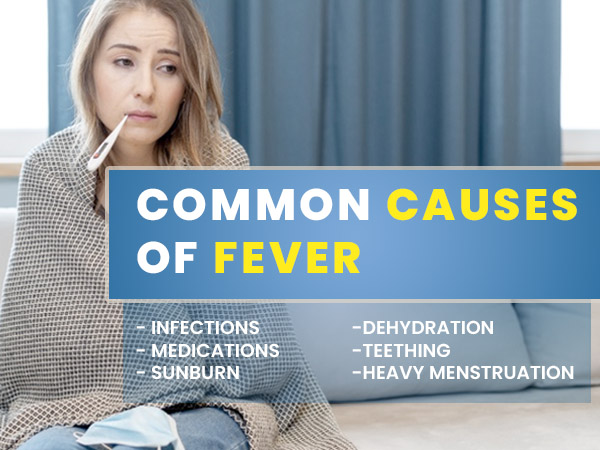Just In
- 4 min ago

- 54 min ago

- 1 hr ago

- 4 hrs ago

Don't Miss
- Movies
 Amazon miniTV Forays Into Tamil, Telugu Language Content; Brings 200+ Dubbed Shows & Films
Amazon miniTV Forays Into Tamil, Telugu Language Content; Brings 200+ Dubbed Shows & Films - Finance
 Top 5 Bank Savings Accounts With No Hidden Charges; Check Details?
Top 5 Bank Savings Accounts With No Hidden Charges; Check Details? - News
 Viral Video Manipur Election 2024 Violence: Miscreants Open Fire Near Booth, 3 Killed
Viral Video Manipur Election 2024 Violence: Miscreants Open Fire Near Booth, 3 Killed - Education
 IIIT-Bangalore Introduces PG Diploma In Digital Product Design And Management
IIIT-Bangalore Introduces PG Diploma In Digital Product Design And Management - Automobiles
 Jawa Yezdi Expands Mega Service Camps To 32 New Cities, Focusing On Tier-II And Tier-III Regions
Jawa Yezdi Expands Mega Service Camps To 32 New Cities, Focusing On Tier-II And Tier-III Regions - Travel
 San Marino: A Hidden Gem Of Ancient Architecture And Culture
San Marino: A Hidden Gem Of Ancient Architecture And Culture - Technology
 Snapchat Is Adding Watermark to AI-Generated Images for Transparency
Snapchat Is Adding Watermark to AI-Generated Images for Transparency - Sports
 Hardik Pandya bystander as Akash Madhwal takes input from Rohit Sharma before bowling final over vs Punjab
Hardik Pandya bystander as Akash Madhwal takes input from Rohit Sharma before bowling final over vs Punjab
Did You Know What Causes A Fever? Check Out Number 19
A fever is a symptom characterised by increased body temperature. The normal body temperature ranges between 36-37 degree-Celsius (98-100 degree-Fahrenheit). If the body temperature rises above this, it indicates a serious condition.
Fever is usually the first symptom for many conditions. It's the body's way of defending pathogens (virus, bacteria or foreign substances) that have entered our body. High body temperature forms an uncomfortable environment for pathogens to survive for longer. After the invasion, the body temperature automatically lowers down to normal. However, the fever can sometimes be life-threatening if it persists for days or recurs or does not go down for longer.
There are many causes for a fever from a simple flu infection to severe tumour. Therefore, it is suggested to consult a medical expert sooner. Take a look at the possible causes of fever.


1. Viral Infection
It is the most common type of infection responsible for causing fever. Viral fever usually lasts for 2-3 days or can exceed a week. Examples of viral infection include common cold, dengue, herpes, HIV and hepatitis. The infection can get transfer from infected body fluids. [1]

2. Bacterial infection
Some common bacterial infections include UTI, food poisoning, strep throat, gonorrhoea and bacterial cellulitis which are responsible for causing fever. Salmonella, E.coli and Clostridium difficile are some of the known bacteria responsible for a range of conditions.


3. Fungal infection
Not all fungal infections cause fever. Fungus like Candida Epidermophyton and Trichophyton usually reside on the moist skin areas such as genitals, toes and breast and cause itching and skin rash. The one that causes fever is two types of coccidioides fungi species responsible for valley fever.

4. Influenza
Influenza is mainly a virus type which is known to cause a deadly pandemic like swine flu. Illness caused due to Influenza A can be life-threatening as it infects both humans and animals. Other influenza types B and C can also cause severe complications.


5. Earaches
Acute earaches among toddlers can sometimes result in a mild fever. However, it can affect adults too. Severe pain, swelling in the middle year and fluid discharge from the ears for longer due to conditions like Otitis media can result in the rise of body temperature. [2]

6. Medications
Drug-induced fever can sometimes result in increased body temperature. Medications that usually cause fever include penicillins, antituberculars, cephalosporins, quinidine, methyldopa, procainamide and phenytoin. The fever often subsides after discontinuation of the medicine. [3]

7. Dehydration
Dehydration is the excess loss of water from the body. Sometimes, excess sodium is also lost which may result in severe complications. Fever is among the vital signs of dehydration along with hypotension and tachycardia (increased heart beat). [4]

8. Heavy menstruation
Menorrhoea (heavy periods) and dysmenorrhoea (painful periods) are the main cause of fever during menstrual cycle. Due to too much loss of blood and cramps, the immune system suppresses which may result in fever or other inflammatory responses.


9. Autoimmune diseases
Fever is a common manifestation in autoimmune diseases like rheumatoid arthritis and lupus. However, the fever pattern is often irregular, non-infectious, low-grade and followed by chills and headache. [5]

10. Sunburn
Severe sunburn or acute exposure to UV rays can result in systemic symptoms such as fever accompanied by nausea and chills. Also, sunburn results in dehydration which suppresses the immune system and raises body temperature. [6]

11. Teething (in infants)
Primary tooth eruption in infants is often linked to fever greater than 37.5 degree-Celcius along with symptoms like diarrhoea, restless sleep and increased salivation. However, the topic is controversial or partially true. [7]

12. Stress
Psychogenic fever is common in people who have mental problems like stress, depression, anxiety and other emotional issues. A study has shown that when some people get exposed to emotional events, their body temperature rises to up to 41 degree-celsius while in people with chronic stress, low-grade fever is common. [8]


13. Silica dust exposure
Inhaling silica dust can result in silicosis. The tiny particles of silica enter the lungs and cause inflammation. This results in fever and formation of scar tissue in the lungs. It is common in people who work in silica industries. [9]

14. Alcohol withdrawal
Alcohol withdrawal may result in varieties of symptoms such as seizures, hallucinations and increased heartbeat, including fever. In chronic users, the central nervous system is suppressed due to the effect of alcohol. When its consumption is stopped, the nervous system gets over excited and causes these symptoms. [10]

15. Certain exercises
Strenuous exercise, especially by athletes may result in fever and dehydration. It comes under acute febrile illnesses which is common among athletes during their training or competition periods. Fever in athletes can be due to alterations in thermoregulation, increase in metabolism, increased muscle strength and endurance. [11]

16. Drug abuse
Use of certain illicit drugs like cocaine, marijuana and heroin can result in fever in 48 hours along with other symptoms like chest pain and other respiratory problems. In people who use intravenous drugs, cotton fever is common. [12]

17. Malignant tumour
Fever due to malignant tumour can be found in around 25 per cent of cases. A tumour can result in infection which may disturb the functioning of the hypothalamus, a part of the brain which is known to regulate the body temperature. [13]

18. Vaccination or immunization
Vaccine shots or immunizations in toddlers and infants can result in fever for a few days. The fever usually begins within 12 hours and is considered normal. Some parents opt for antipyretic medications before vaccination to prevent fever and pain symptoms. [14]

19. Blood clots
Deep vein thrombosis (DVT) is a condition in which the blood clots appear in deep veins. A mild fever is common during the condition. However, fever is also linked to increased risk of other complications in DVT.

20. Inflammatory diseases
Fever is the hallmark of many chronic inflammatory diseases like Crohn's diseases, asthma, bronchitis, periodontitis, gout and myositis. Fever, exhaustion and malaise is common in these diseases due to suppression of the immunes system. [15]

21. Undetected cancer type
Some cancer types like leukaemia and lymphoma cause fever at some point of time which often goes undetected. Fever occurs as a result of loss of white blood cells which result from immune system degradation.

Common FAQs
1. What is considered a real fever?
A real fever is when the body temperature goes beyond 37 degree-Celsius and does not lower down soon which results in other complications.
2. What happens when your body gets a fever?
When the body gets a fever, the count of antibodies or white blood cells increases to combat the pathogens responsible for causing fever.
3. Can you feel if you have a fever?
Yes, we can feel a fever by touching our forehead or armpits. If the temperature is too high, it's a sign of fever. Consult a medical expert soon.
-
 healthCommon Cold: Causes, Symptoms, Risks, Effective Remedies And More
healthCommon Cold: Causes, Symptoms, Risks, Effective Remedies And More -
 healthDengue 101: Causes, Symptoms, Risks, Complications, Treatment, Prevention, Diet And More
healthDengue 101: Causes, Symptoms, Risks, Complications, Treatment, Prevention, Diet And More -
 healthUnbelievable! Malaysia's Plan To Eradicate Dengue Fever With Mosquitoes
healthUnbelievable! Malaysia's Plan To Eradicate Dengue Fever With Mosquitoes -
 wellnessTry These 5 Hot Beverages For Relief From Common Cold
wellnessTry These 5 Hot Beverages For Relief From Common Cold -
 healthViral Infection vs. Dengue: How Are The Symptoms Different?
healthViral Infection vs. Dengue: How Are The Symptoms Different? -
 wellness4 Best Home Remedies For Body Pain Caused By Dengue Fever
wellness4 Best Home Remedies For Body Pain Caused By Dengue Fever -
 wellnessGuduchi (Giloy) For Dengue: Can This Herb Reduce Dengue Fever Symptoms?
wellnessGuduchi (Giloy) For Dengue: Can This Herb Reduce Dengue Fever Symptoms? -
 healthHow To Use Neem Leaves For Dengue Symptoms? Does It Reduce Fever?
healthHow To Use Neem Leaves For Dengue Symptoms? Does It Reduce Fever? -
 pregnancy parentingInfant Care During Dengue Fever: Keeping Your Baby Safe in Mosquito Season
pregnancy parentingInfant Care During Dengue Fever: Keeping Your Baby Safe in Mosquito Season -
 healthFenugreek Leaves For Dengue: Can The Leaves Treat Dengue Fever Symptoms?
healthFenugreek Leaves For Dengue: Can The Leaves Treat Dengue Fever Symptoms? -
 healthThe Secret Link between Cold Weather and Flu Unveiled!
healthThe Secret Link between Cold Weather and Flu Unveiled! -
 healthWhat Does The Sound Of Your Cough Say About Your Lung Health?
healthWhat Does The Sound Of Your Cough Say About Your Lung Health?


 Click it and Unblock the Notifications
Click it and Unblock the Notifications










